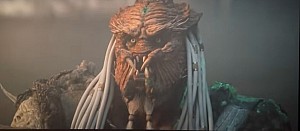This post was published by a guest. The views expressed are those of the author and do not necessarily reflect the views of Scified.com.
Science fiction has long been a fertile ground for imaginative ideas that often stimulate real-world technological advancements. Over the decades, many technologies that were once purely speculative have leaped off the pages of science fiction books and screens of sci-fi movies into reality. Here’s a look at some significant technologies that have made this extraordinary journey:
- Tablet Computers
Sci-fi has frequently featured slim, handheld devices for computing and communication, a vision that has materialized as tablet computers. In Stanley Kubrick’s 1968 film 2001: A Space Odyssey, characters use devices strikingly similar to today's tablets. Decades later, tablets have become ubiquitous for personal and professional use, whether researching online or looking for free spins at www.freeextrachips.com, embodying the sci-fi vision of portable, convenient computing.
- Voice-Activated Assistants
The concept of speaking to a machine and it understanding and responding can be traced back to various science fiction narratives. One of the most iconic is the computer on Star Trek, which could control the ship, access data, and interact with the crew through voice commands. Today, voice-activated assistants like Siri, Alexa, and Google Assistant are integral parts of many people's daily routines, controlling smart homes, setting reminders, and providing information on demand.
- Virtual Reality (VR) and Augmented Reality (AR)
Virtual and augmented reality technologies have their roots deep in sci-fi, such as the "holodeck" simulations from Star Trek and the immersive virtual worlds in movies like The Matrix. Today, VR and AR are rapidly advancing fields, used in everything from gaming and entertainment to training surgeons and enhancing various forms of therapy.
- Self-driving Vehicles
Autonomous vehicles were a frequent feature in sci-fi, with examples including the self-driving cars in Total Recall. While fully autonomous vehicles are still evolving, many of today’s cars come with features like autopilot and advanced driver-assistance systems that handle parking, lane control, and navigation, pushing ever closer to the complete self-driving model envisioned in science fiction.
- Space Tourism
Once a fantastical idea seen in sci-fi, space tourism is becoming a reality. Visionaries like Richard Branson, Elon Musk, and Jeff Bezos have turned what was once a plot in sci-fi movies and books into budding commercial enterprises with companies like Virgin Galactic, SpaceX, and Blue Origin facilitating trips to space for non-astronauts.
- Wearable Technology
Sci-fi has often depicted characters with devices worn on their bodies that monitor health or enhance human capabilities. Today, wearable technology includes smartwatches that track physical activity and health metrics, and exoskeletons that assist with lifting or can help those with impaired mobility.
- Artificial Intelligence (AI)
AI is a central theme in many science fiction works, where machines exhibit intelligence and awareness comparable to humans. This has translated into the development of sophisticated AI systems that can perform tasks ranging from language translation and facial recognition to driving cars and diagnosing diseases.
- 3D Printing
The concept of creating three-dimensional objects layer by layer was once a sci-fi notion. Today, 3D printing technology is used for manufacturing parts for cars, creating prosthetic limbs, building homes, and even developing organs with bio-printing techniques.
- Robotic Surgery
Sci-fi films and shows have often depicted robotic technologies that aid in surgeries. This has become a reality with robotic surgical systems like the Da Vinci, which allows surgeons to perform complex procedures with more precision, flexibility, and control than standard surgical approaches.
- Communicators
The communicators from Star Trek were a precursor to our modern mobile phones. The idea of portable communication devices has not only been realized but has far surpassed the original sci-fi concepts with smartphones that act as powerful computers right in our pockets.
The line between science fiction and reality continues to blur as innovators and scientists draw inspiration from the creative visions of the past, turning once fictional ideas into the everyday technologies of our modern world.

What Your Favorite Sci-Fi Movie Reveals About Which Casino Game You Will Be Good At
Your go-to sci-fi film can reveal more about you than you might think, especially in terms of what you choose to watch for fun. The characters you roo...

Stuck on Your Story? 4 Forbidden Fiction Writing Methods You Won’t Learn in School
Read this article to discover four fiction writing methods that traditional classes never cover. These unconventional techniques will help you push cr...

Honkai: Star Rail’s 3.6 Banner Rotations & New Characters
Honkai: Star Rail’s latest 3.6 update has arrived, which brings some brand new banner rotations and characters to the mix. This leaves players s...

The Best Sci-Fi Movies, Shows, and Books Every Fan Should Know
Science fiction has always been more than simply a way to pass the time. It's a method to think about the future, challenge the present, and push the ...

Geek Bar Vape Flavors By Durity Distribution: Trending In 2025
The vaping industry continues to evolve, and one name that consistently stands out for retailers and customers alike is Geek Bar. Known for bold taste...









